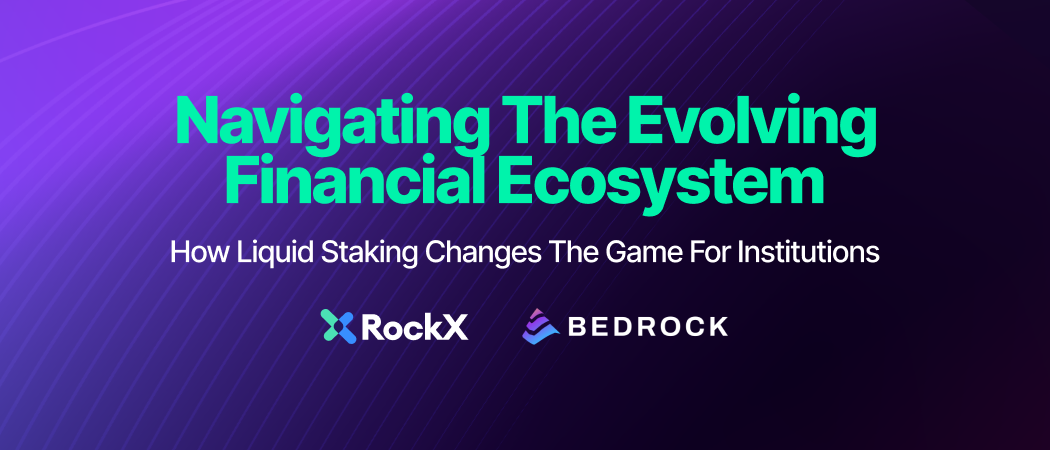The financial landscape is witnessing a transformative phase with increasing institutional adoption of cryptocurrency. This interest has resulted in evolving regulations, particularly in the retail sector. As institutions navigate this terrain, they face the challenge of ensuring compliance and security. With multiple jurisdictions and varying regulations, the task is complex but necessary. The financial ecosystem is becoming more interlinked, encompassing not just assets but also new financial and internet infrastructures.
A Marriage among TradFi, CeFi, and DeFi
An unprecedented convergence is occurring where Traditional Finance (TradFi), Centralized Finance (CeFi), and Decentralized Finance (DeFi) are integrating to offer comprehensive portfolio management. This integration fosters a more robust investment landscape, enabling investors to diversify across various asset classes. Institutions are increasingly comfortable incorporating crypto into their portfolio, and the recent approval of the Bitcoin (BTC) ETF indicates growing institutional interest in traditional finance platforms delving into crypto.
The Role of Custody in Institutional Adoption of Crypto
Custody is critical in the institutional adoption of cryptocurrencies, addressing security, fraud, and regulatory compliance concerns. As institutions explore the crypto market, solutions like Cactus Custody provide the necessary infrastructure, ensuring the safekeeping of digital assets and enabling institutions to focus on their core activities without the worry of managing complex digital infrastructures.
Liquid Staking: An Emerging Yield-Generation Option
Liquid Staking (LS) is emerging as a novel way for institutions to generate yield from their crypto holdings. It’s seen as a safer yield-generating mechanism in the crypto market, akin to fixed income in traditional finance. Institutions accumulating physical crypto assets like Ethereum or Solana can use LS to generate yield.
Liquid Staking differs markedly from traditional staking methods; it enables the staked assets to remain fluid and accessible, a feature particularly attractive for institutional investors who seek both yield and liquidity.
Earning Rewards With Liquid Staking
The introduction of LS has redefined the landscape of yield generation in the crypto domain, particularly for Ethereum. This approach allows institutions to earn rewards by staking ETH for network rewards, while simultaneously maintaining liquidity. By utilizing LS, institutions can capitalize on the inherent benefits of staking, such as earning rewards for contributing to network security, without the typical constraints of asset illiquidity.
However, the mechanics of earning rewards through LS involve a complex interplay of factors that institutions need to understand. Staking rewards stem from the validation activities conducted using the staked assets. However, the journey doesn’t end here as security is key for financial institutions managing vast sums of money.
Institutions should delve deeper into the nuances of non-custodial staking and the associated security aspects. This exploration is crucial, as it equips them with the knowledge to navigate the landscape effectively, ensuring they optimize their participation in LS while adhering to the highest security standards. The dual benefit of earning rewards and contributing to network stability, coupled with the need for comprehensive understanding, places LS at the forefront of institutional strategies in the evolving world of crypto finance.
Security and Transparency in Sustaining a Safe Investment Option
The importance of security and transparency in the DeFi ecosystem cannot be overstated, especially for institutional investors and are crucial in mitigating risks. Companies like Consensus, a partner of Cactus Custody, have been instrumental in building solutions that enhance compliance and risk mitigation, thus ensuring a safer investment environment for institutions.
The Importance of Strong Partnerships
The integration of Bedrock with partners like Amber and Coin98 marks a significant step in enhancing the capabilities of financial institutions in the crypto space. These partnerships enable institutions to access a broader range of services, from custody to staking solutions, thereby streamlining their entry and participation in the crypto market. With these integrations, institutions can navigate the complex landscape of crypto investments more confidently and efficiently.
Additionally, Bedrock recently integrated Wallet Connect to make LS more accessible to all. With this integration, users may easily connect their preferred Web3 wallets directly to Bedrock for a seamless LS experience. This simplicity enables individuals and institutions alike to engage with DeFi protocols while maintaining security and compliance standards.
Conclusion
The financial ecosystem is undergoing a significant transformation, marked by the integration of TradFi, CeFi, and DeFi, the pivotal role of custody in crypto adoption, the emergence of liquid staking, and the increasing importance of security and transparency. As institutions adapt to these changes, they are presented with new opportunities for yield generation and portfolio diversification. The collaboration among various players like Cactus Custody, Rock X, and Bedrock, along with regulatory clarity, is paving the way for more robust and sustainable growth in the financial sector. As the industry evolves, institutions must stay informed and agile, embracing new technologies and strategies to thrive in this dynamic landscape.
To listen to experts discuss this subject matter, do watch the recording of the exclusive Webinar between Zhuling Chen, CEO of RockX, Lionel Koh, Head of Business Development at QCP Capital and Timothy Tan, Head of Sales and Marketing of Cactus Custody.









